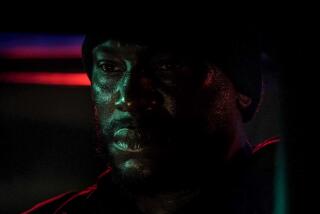Forgive and remember
THERE IS NO memorial in South-Central Los Angeles to the events of April 29, 1992. How on Earth could one monument possibly encompass the complexity of the events leading to and away from that uprising?
What would a plaque commemorating that tangled reality say? “Here’s to the liquor store owners who bravely defended their private foothold in somebody else’s ghetto”? Or: “In honor of Rodney King’s defenders who had no impact on his attackers, nor on those who let his attackers go free”? “Here’s to the police who defended Beverly Hills by sacrificing Koreatown”? Maybe: “We rose as one, we scared the hell out of the oppressors, and then we scared the hell out of ourselves”?
Besides, monuments provide only an illusion of permanence. They are no guarantee that those events that desperately require memory are not forgotten -- in this case the step-by-step escalation on that day in 1992: the announcement of the acquittal of the Los Angeles Police Department officers who beat Rodney King, the protest at Parker Center, the disengagement of the police, the abandonment of South-Central and Koreatown and, finally, the fires and inter-ethnic pillaging.
Events are not always as they seem -- and certainly not the way they are officially recounted. In the media, but also in our own memories, we resist complexity and seek out easy-to-follow narratives. But what happened in Los Angeles demands more than fuzzy recollection. As a city, we must transfer the surreal quality of that uprising to newcomers and newborns.
All too often, that day in 1992 -- called sa-i-gu (4-2-9) in the Korean American community -- is misrepresented as merely being about black/Korean tension. It certainly had a devastating effect on the city’s Koreans. More than 2,000 Korean-owned businesses suffered a partial or total loss of their properties -- making up about half of the city’s total losses. (Citywide, 1,000 buildings were damaged or destroyed at a cost of nearly $1 billion.)
The New York Times, for instance, in a recent piece about Korean Americans, summarized “the 1992 civil unrest” as “the violence that followed a deadly confrontation between a Korean store owner and a black teenager.” The reference was to Soon Ja Du, who was sentenced to five years’ probation for killing Latasha Harlins in March 1991.
Harlins’ death and the exacerbation of ethnic tension that followed must not be ignored -- but it was hardly the catalyst. In fact, it was the unpopular verdict exonerating the officers responsible for the King beating that brought South-Central residents into the streets in a defiant protest. It was the police strategy of containing the unrest and protecting Beverly Hills, Culver City and West Los Angeles that left Koreatown vulnerable to looting. And it was the lack of a salient target for the rage against the verdict -- a perceived direct act of injustice -- that led blacks and Latinos to strike out against those Korean American businesses.
Though largely portrayed in the national media as a black uprising, the true story is more complicated. Half of those arrested were Latino, and only 1 in 3 were black. However, in doing ongoing research about the uprising, we found a unique Latino perspective, interpreting it as a matter of black rage -- stemming from racism and economic disenfranchisement -- against Asians and Latinos as well as whites. One Latino we interviewed put it this way: “Faced with nearly a million-and-a-half Latinos taking over the inner city, blacks revolted, rioted and looted.”
This day in history is of no use to public relations for the city of Los Angeles. Fifty-four people died and more than 2,200 were injured. It’s doubly a black eye for the LAPD, whose actions sparked a fire it could not put out. Like the police, perhaps all African Americans, Latinos and Korean Americans would defend their actions that day -- but few would be regarded as heroes. Perhaps people learned too much about themselves that day and in the aftermath. Some people say forgive and forget.
We suggest this. Forgive and remember. Once a year, remind yourself and others of the complexities of that day in April 1992. Remind yourself about the complexities of justice and fairness.
We do not need a monument; such things are static and easily ignored. But we need a memorial, an interactive process, our own ceremony to recollect the day the city fractured. We all need to share our memories and let them conflict with the memories of others -- that’s how we avoid collective amnesia and build a future.
More to Read
The biggest entertainment stories
Get our big stories about Hollywood, film, television, music, arts, culture and more right in your inbox as soon as they publish.
You may occasionally receive promotional content from the Los Angeles Times.










